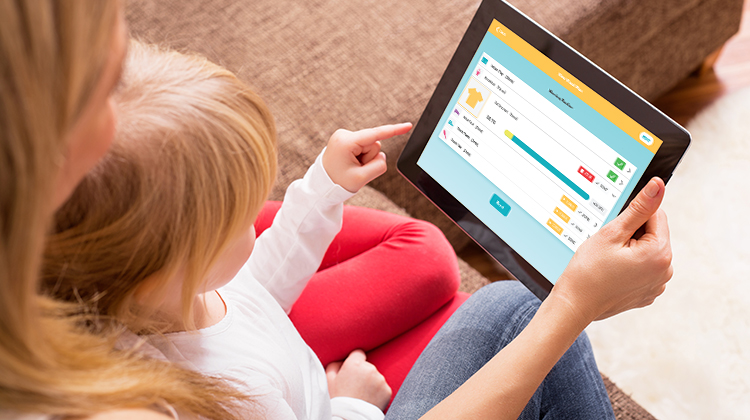Easing Anxiety in Childhood

I’ll never forget my child’s first day at school. Amidst several children crying and clinging to their mothers’ legs, the teacher trying to console them all, my anxious son, still only four, crept up to me and whispered, “You can go now, mum”.
This wasn’t luck – it was strategy. I had utilised effective, evidence-based tools to ensure that he was set up for success.
Tears at drop off are difficult for everyone – not only the child and their parent, but also their teacher, torn between trying to assist that child and welcoming their other students, who may now feel more worried and uncertain.
Anxiety is the commonest health burden in girls aged 5-14 years old, and second commonest (behind asthma) in boys (1). With a prevalence of 11%, teachers can expect several students per class to be affected. Separation anxiety is the commonest form of anxiety disorder in children and is associated with school refusal in 75% of cases (2).
Regardless of type, anxiety negatively impacts students’ learning ability and outcomes, as evidenced by lower average Naplan scores compared with children without a mental health disorder (3). In secondary school, more than a quarter of children with mental health disorders reported reduced connectedness and one third reported that they did not experience good engagement with school (3).
Many mental health disorders, including anxiety, start early in life. Ideally, these children would receive appropriate medical and mental health interventions. Yet currently this is far from the norm, which leaves parents and educators to assist as best they can.
Despite the high rates of anxiety in early childhood, most educators don’t have access to the strategies and support they need. Whilst teachers should not be expected to become mental health experts or take on the role of therapists, they can utilise effective management strategies. A central part of anxiety management is preparing the child for what will happen – showing and telling them in advance.
Two effective strategies to explain what will happen are social stories and visual plans. Social stories were originally used to explain a concept, skill, or idea to children with learning difficulties. They can also be used to explain what will happen, or reflect on events and are most effective when personalised to the child.
Visual plans are a representation of events, in order, that can be read by children who may not yet be able to read. Being able to see what is happening next is reassuring, and having a visual plan allows children to check in independently, and feel more in control. These tools are complimentary and are particularly helpful for visual learners.
While a visual plan can be drawn up on the whiteboard each morning for the class, creating a social story, takes more time and effort.
As a doctor, I believe in early intervention, and prevention wherever possible. So, unsurprisingly, I took a pro-active approach for my anxious son. Like any parent, I wanted effective solutions to support him and his teacher. Visual plans and social stories have been invaluable, but the truth is, they are burdensome to create. This is why I created the Courageous Kids app.
In collaboration with a paediatric psychologist and occupational therapist, I have created a library of personalised social stories and visual plans (including sensory breaks) that educators and parents alike can tailor to their children. There are story series to prepare for preschool and school, and visual plans can be created from scratch or downloaded directly from templates. Stories come fully illustrated with 20 character options for children and adults, and there is the option to swap out individual pictures with photographs. This builds familiarity with a new teacher, classroom, and school, well ahead of the first day.
To make the most of the orientations coming up over the next few months, consider creating social stories for the children in your class. Better still, get their parents to make the stories, and ensure they snap a photo of you with their child, in your classroom, to be used in place of some story illustrations. This builds familiarity and trust, reducing anxiety even before their first day.
In creating the Courageous Kids app, I hope that all parents and educators will be able to access practical, evidence-based solutions for their children, giving them the strongest possible foundation for their early years. You can access more information about social stories and visual plans sensory breaks on the website, www.courageouskidsapp.com and download Courageous Kids from Google Play and the App Store.
References
1 Welfare, A.I.o.H.a. Health of young people. 7 July 2022; Available from: https://www.aihw.gov.au/reports/children-youth/health-of-children.
2 Pickering, A. Separation Anxiety Facts and Statistics. 2022; Available from: https://www.therecoveryvillage.com/mental-health/separation-anxiety/separation-anxiety-statistics/.
3 Child and Adolescent Mental Health and Educational Outcomes, An analysis of educational outcomes from Young Minds Matter, the second Australian Child and Adolescent Survey of Mental Health and Wellbeing, D.o. Health, Editor. 2015.